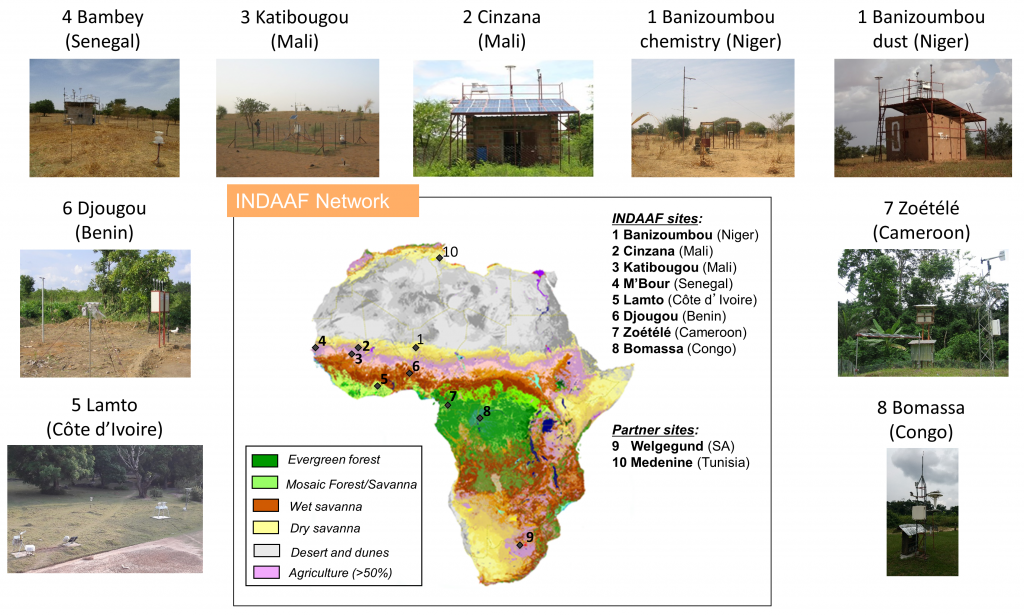INDAAF
International Network to study Deposition and Atmospheric chemistry in AFrica
Atmospheric composition and deposition long-term monitoring in Africa
INDAAF (International Network to study Deposition and Atmospheric composition in Africa) is a network dedicated to the long-term monitoring of the atmospheric composition and deposition fluxes in Africa. INDAAF results from the merging, in 2015, of the IDAF (IGAC-DEBITS Africa) observation service (labeled INSU/CNRS since 1995) and the “Sahelian Dust Transect” network deployed in 2006 the frame of the African Monsoon Multidisciplinary Analysis (AMMA) international program.
INDAAF is a national observation service (Service National d’Observation, SNO) of the Institut National des Sciences de l’Univers (INSU) of the Centre National de Recherche Scientifique (CNRS), and supported by the Institut de Recherche pour le Développement (IRD). The network is also supported by the Observatoire Midi-Pyrénées (OMP) and the Observatoire des Sciences de l’Univers – Enveloppes Fluides de la Ville à l’Exobiologie (OSU-EFLUVE). It is piloted by the Laboratoire d’Aérologie (LAERO, Toulouse, France) and the Laboratoire Interuniversitaire des Systèmes Atmosphériques (LISA, Créteil, France) with the contribution of the Institut d’Ecologie et des Sciences de l’Environnement de Parie (iEES-Paris, Bondy, France).
INDAAF is part of the French Research Infrastructure Aerosol Cloud and Trace Gases Infrastructure Research (ACTRIS-FR) since 2015. INDAAF contributes also to international initiatives:
– it is a long term project endorsed by the Deposition of Biogeochemically Trace Species (DEBITS) activity part of the International Global Atmopsheric Chemistry (IGAC) programme,
– it is an official contributing network to the World Meteorological Organization-Global Atmospheric Watch (GAW) programme and it contributes to the WMO Sand and Dust Storm Warning Advisory and Assessment System (SDS-WAS).
The INDAAF long term monitoring network is composed by 8 stations in 7 countries of West and Central Africa (Mali, Niger, Côte d’Ivoire, Senegal, Benin, Congo, and Cameroun). Two partner stations are located in South Africa and South Tunisia. The INDAAF measurement sites are representative of non perturbed rural sites of the main African ecosystems (dry savannas-wet savannas-equatorial forests).

